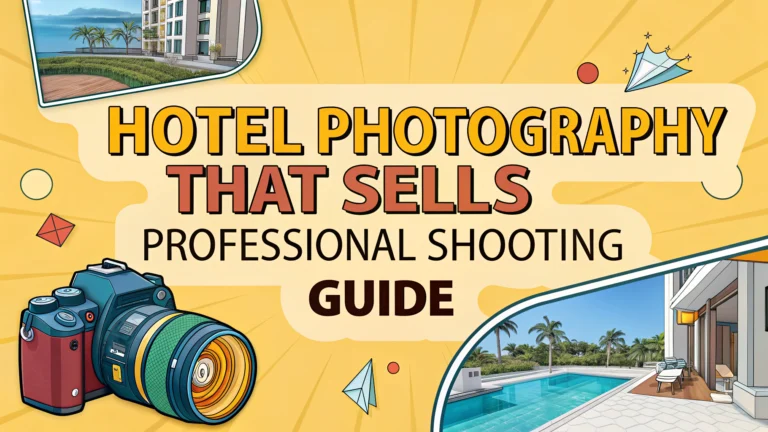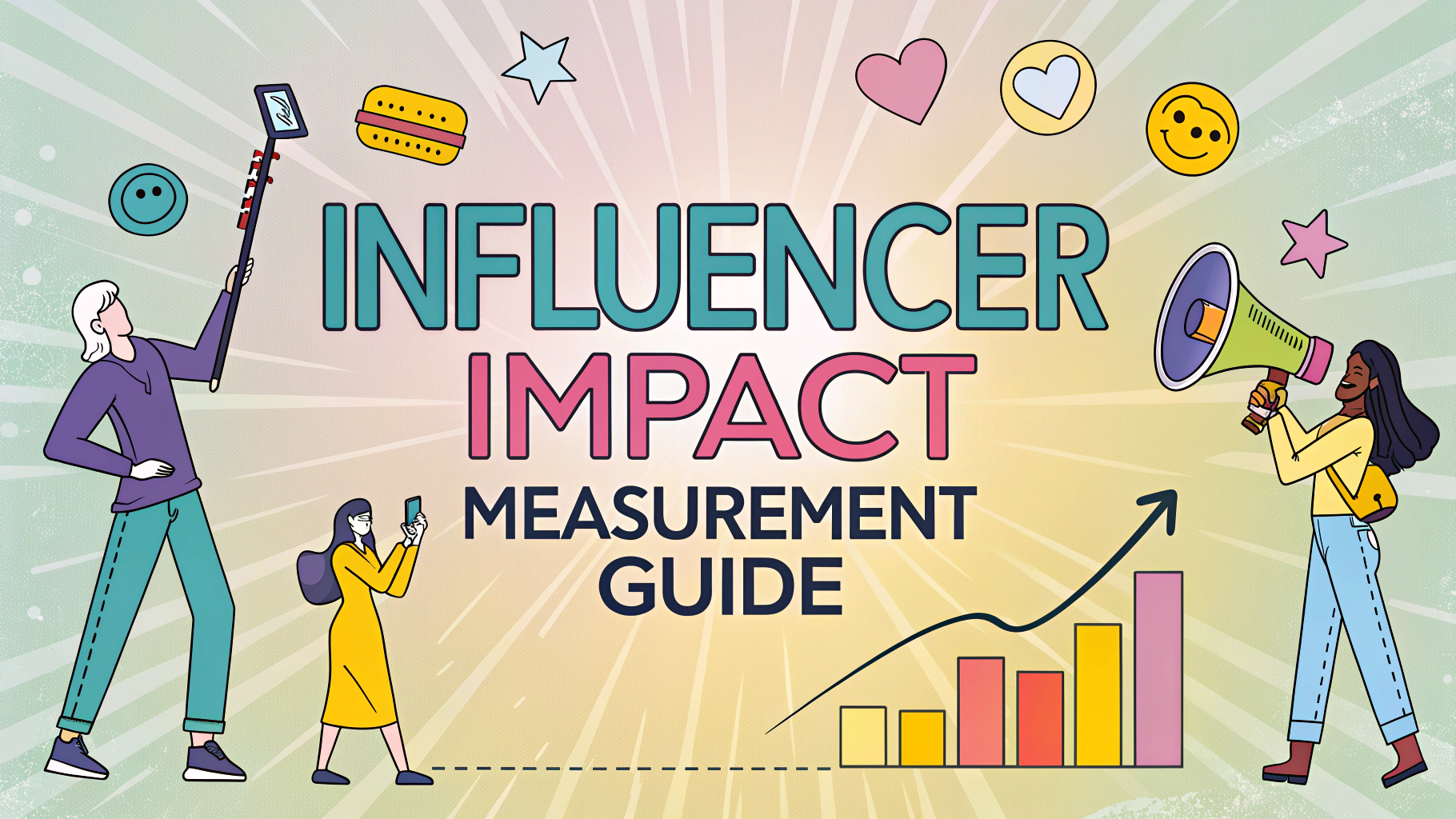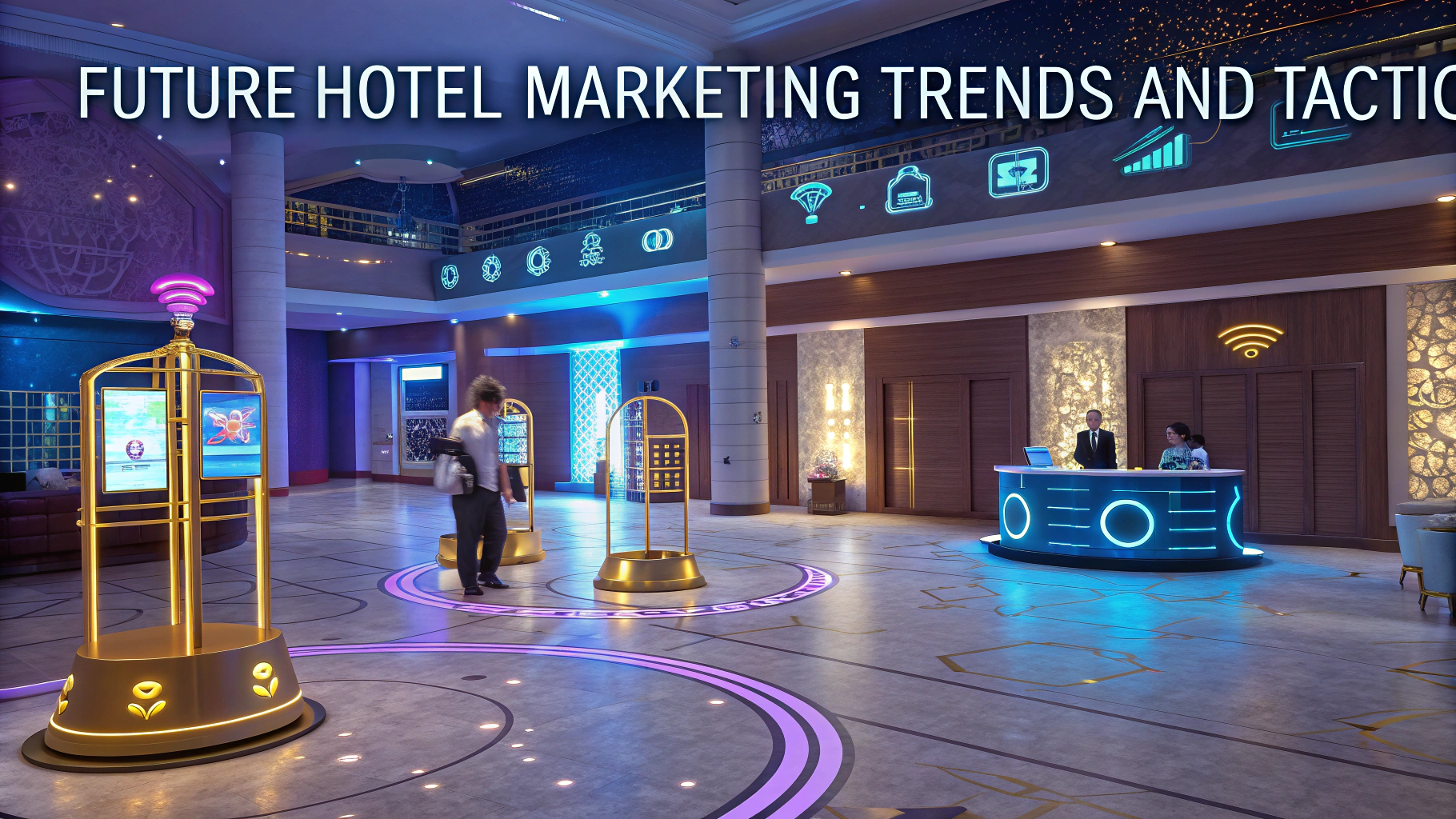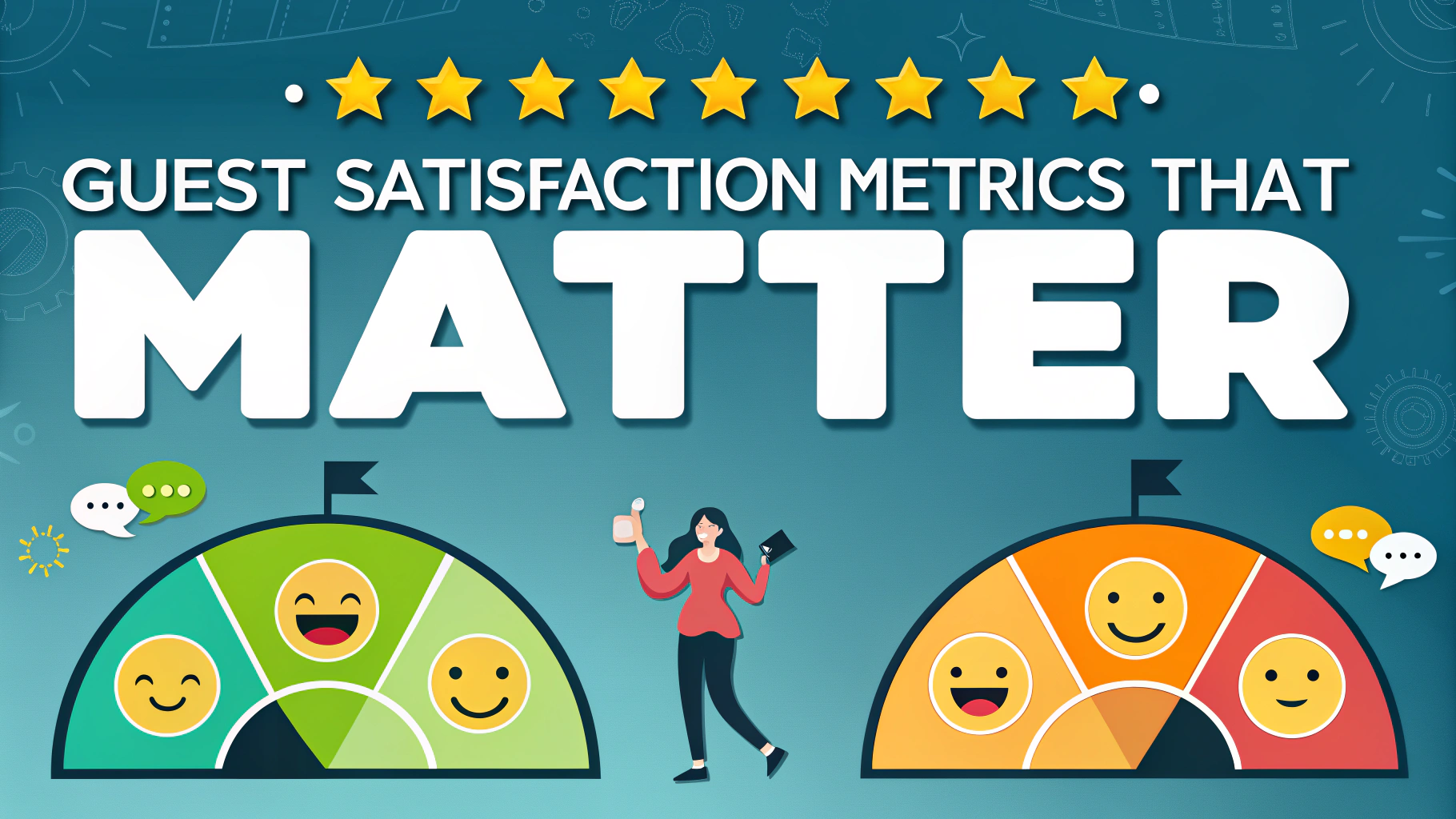Getting the right hotel photos can make or break your bookings – research shows properties with professional images get up to 225% more reservations.
Professional hotel photography requires careful planning, the right equipment, and proven shooting techniques to showcase your property in its best light.
This practical guide covers essential tips for capturing compelling hotel photos that convince potential guests to book.
Essential Photography Equipment
- Full-frame DSLR or mirrorless camera
- Wide-angle lens (16-35mm recommended)
- Tripod for stability
- External flash units
- Light modifiers and diffusers
- Color checker for accurate white balance
Pre-Shoot Planning
- Create a shot list covering all key areas
- Schedule shoots during optimal lighting conditions
- Style rooms and spaces beforehand
- Remove clutter and distracting elements
- Check weather forecasts for exterior shots
Key Areas to Photograph
- Hotel exterior and entrance
- Lobby and reception
- Room types (standard, deluxe, suites)
- Bathrooms
- Restaurant and bars
- Pool and spa facilities
- Meeting/event spaces
- Views from rooms
Technical Tips
Shoot in RAW format to preserve maximum image quality and editing flexibility.
Use a tripod and remote shutter release to ensure sharp images even in low light.
Set your aperture between f/8 and f/11 for optimal depth of field in interior shots.
Bracket exposures (+/- 2 stops) to capture details in both highlights and shadows.
Composition Guidelines
- Shoot from corner angles to show room depth
- Include windows to showcase views
- Keep vertical lines straight
- Frame shots at bed or chest height
- Show amenities in context
Lighting Techniques
Schedule interior shots during blue hour (dawn/dusk) to balance indoor and outdoor lighting.
Use flash bounced off walls/ceiling to create soft, natural-looking light.
Consider HDR techniques for rooms with challenging lighting conditions.
Post-Processing Tips
- Correct lens distortion
- Adjust white balance for natural colors
- Remove temporary distractions
- Enhance contrast and vibrance subtly
- Maintain consistent editing style across all images
Image Specifications for Online Use
- Save final images as high-quality JPEGs
- Minimum resolution: 2048 pixels on longest side
- Color space: sRGB
- File size: under 5MB per image
- Include alt text for SEO
Taking Your Hotel Photography Further
Consider hiring a professional photographer specializing in hospitality photography for best results – the return on investment typically pays for itself through increased bookings.
Contact professional hotel photography associations like Hospitality Photographers Association (www.hpassociation.com) to find qualified photographers in your area.
Regular updates to your photo collection (every 12-18 months) help maintain an accurate representation of your property.
Advanced Photography Techniques
Experiment with different angles and perspectives to create unique viewpoints that stand out from competitor properties.
- Use leading lines to draw viewers into the image
- Create depth through foreground elements
- Capture lifestyle shots with models when possible
- Showcase unique property features and local attractions
Seasonal Photography
Build a diverse image library that highlights your property throughout the year.
- Capture exterior shots in different seasons
- Photograph special holiday decorations
- Document seasonal amenities and activities
- Update pool and outdoor areas during peak seasons
Virtual Tours and 360-Degree Photography
Complement still photography with immersive visual experiences.
- Create virtual walkthrough tours
- Produce 360-degree room panoramas
- Include drone footage for aerial perspectives
- Develop interactive property maps
Building Your Visual Brand
Your hotel photography should align with your overall brand strategy and target market expectations.
- Maintain consistent visual style across all platforms
- Showcase unique selling points
- Tell your property’s story through images
- Update imagery regularly to stay competitive
Maximizing Return on Investment
Quality hotel photography is a crucial investment in your property’s success. Professional images not only drive direct bookings but also enhance your presence across all marketing channels, from OTAs to social media platforms.
- Track booking conversion rates before and after photo updates
- Monitor engagement metrics on social platforms
- Analyze click-through rates on booking sites
- Consider ongoing maintenance shoots to keep content fresh
Elevating Your Property’s Visual Experience
Investing in professional hotel photography is no longer optional in today’s highly visual digital marketplace. By following these guidelines and regularly updating your image collection, you’ll create a compelling visual story that drives bookings and sets your property apart from the competition.
Remember that great hotel photography is an ongoing process, not a one-time project. Stay current with industry trends, maintain high standards for your visual content, and continuously evaluate and update your image library to ensure it accurately represents your property’s best features and experiences.
FAQs
- What equipment do I need for professional hotel photography?
You need a full-frame DSLR or mirrorless camera, wide-angle lens (16-35mm), tripod, flash units, remote triggers, polarizing filter, and tethering equipment. - What’s the best time to photograph hotel interiors?
The golden hours (early morning or late afternoon) are ideal for balancing natural light with interior lighting. For rooms with large windows, shoot during blue hour to balance interior and exterior exposures. - How do I handle mixed lighting conditions in hotel rooms?
Use white balance cards, multiple exposures for different light sources, and HDR techniques. Ensure all artificial lights in the room are the same color temperature. - What are the essential angles for hotel room photography?
Shoot from doorway entrance, corners at eye level, bed view, bathroom entrance, and window view. Include 45-degree angles of the room to show depth and space. - Should hotel photos be staged or capture the natural setting?
Hotels should be staged professionally with proper styling, removed clutter, straightened linens, and strategic prop placement while maintaining a natural, lived-in feel. - What resolution and file formats are standard for hotel photography?
Shoot in RAW format at highest resolution. Final images should be delivered in both high-resolution TIFF (300dpi) and web-optimized JPEG formats (72dpi). - How do I photograph small hotel bathrooms effectively?
Use wide-angle lenses, multiple lighting setups, and shoot from doorway or corners. Capture reflections strategically and remove personal amenities. - What editing techniques are acceptable for hotel photography?
Standard adjustments include exposure correction, color balance, lens distortion removal, and subtle HDR. Avoid excessive manipulation that misrepresents the actual space. - How many photos should be delivered for a standard hotel room?
Typically 4-8 final images per room type, including main room view, bathroom, specific amenities, and views if applicable. - What legal considerations exist for hotel photography?
Obtain property releases, model releases for any people in shots, and ensure compliance with brand guidelines. Respect guest privacy during shooting.







